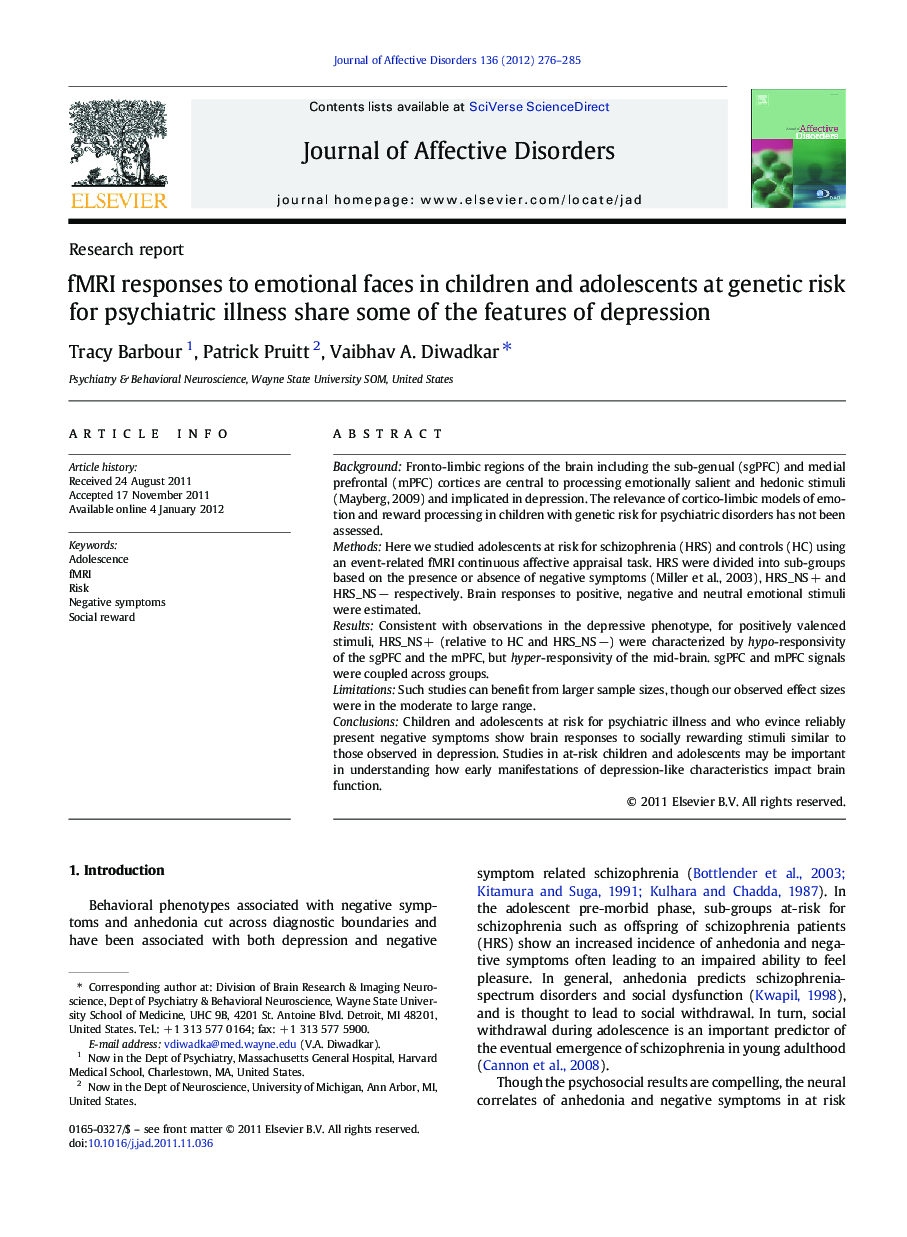| Article ID | Journal | Published Year | Pages | File Type |
|---|---|---|---|---|
| 6235347 | Journal of Affective Disorders | 2012 | 10 Pages |
BackgroundFronto-limbic regions of the brain including the sub-genual (sgPFC) and medial prefrontal (mPFC) cortices are central to processing emotionally salient and hedonic stimuli (Mayberg, 2009) and implicated in depression. The relevance of cortico-limbic models of emotion and reward processing in children with genetic risk for psychiatric disorders has not been assessed.MethodsHere we studied adolescents at risk for schizophrenia (HRS) and controls (HC) using an event-related fMRI continuous affective appraisal task. HRS were divided into sub-groups based on the presence or absence of negative symptoms (Miller et al., 2003), HRS_NSÂ + and HRS_NSÂ â respectively. Brain responses to positive, negative and neutral emotional stimuli were estimated.ResultsConsistent with observations in the depressive phenotype, for positively valenced stimuli, HRS_NSÂ + (relative to HC and HRS_NSÂ â) were characterized by hypo-responsivity of the sgPFC and the mPFC, but hyper-responsivity of the mid-brain. sgPFC and mPFC signals were coupled across groups.LimitationsSuch studies can benefit from larger sample sizes, though our observed effect sizes were in the moderate to large range.ConclusionsChildren and adolescents at risk for psychiatric illness and who evince reliably present negative symptoms show brain responses to socially rewarding stimuli similar to those observed in depression. Studies in at-risk children and adolescents may be important in understanding how early manifestations of depression-like characteristics impact brain function.
